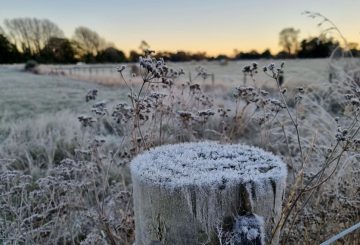뉴질랜드 버드 아틀라스 프로젝트가 2019년부터 2024년까지 5년 만에 성공적으로 마무리되었습니다.프로젝트에 참여한 커뮤니티는 이 기간 동안 309종의 조류를 관찰했습니다.가장 흔한 종은 파히리니/채핀치, 마누 판고/블랙버드, 타우후/실버아이였습니다.
뉴질랜드 최대 규모의 커뮤니티 사이언스 이니셔티브 중 하나인 이 프로젝트는 뉴질랜드 야생동물 관리 국제 유한회사에서 공동으로 진행했습니다.전국의 조류 관찰자들이 자원하여 441,000개 이상의 체크리스트와 145,000시간의 작업 시간을 기증했습니다.이들은 커뮤니티 과학 플랫폼인 eBird를 사용하여 관찰 내용을 업로드했습니다.
아틀라스 코디네이션 팀 리더인 댄 버긴 (Dan Burgin) 에 따르면 이 프로젝트의 목표는 전국을 덮고 있는 격자 사각형 안에서 가능한 모든 조류 종을 관찰하는 것이었습니다.측량사를 안내하기 위해 각각 10 x 10km의 그리드 스퀘어가 3,232개 이상 설치되었습니다.
이 광장의 97.3% 이상이 조류 관찰 데이터를 받은 것으로 프로젝트가 종료되었습니다.자연보호부, 여러 지역 위원회, 캔터베리 환경부, 사우스랜드 환경부 및 기타 단체가 업로드한 데이터가 커뮤니티의 노력을 뒷받침했습니다.또한 토이 와인은 조사 대상이 부족한 지역을 목표로 삼고 적용 범위를 넓히기 위해 여섯 차례의 아틀라스 탐사대에 자금을 지원했습니다.
이 프로젝트는 뉴질랜드의 조류 종에 관한 최신 정보를 수집하여 향후 보존 결정을 내리고 더 많은 종들이 멸종 위기에 처하지 않도록 방지하는 것을 목표로 했습니다.이 목표는 광범위한 적용 범위와 제출된 체크리스트의 수를 통해 달성되었습니다.
이 프로젝트의 데이터를 통해 조류 분포를 과거 Atlas 프로젝트 데이터 세트와 비교할 수 있으며, 이를 통해 대규모 기간 동안 전국적으로 조류 분포의 변화를 확인할 수 있습니다.
이 아틀라스 프로젝트는 코넬 조류학 연구소와의 파트너십 덕분에 디지털 우선 프로젝트가 된 최초의 프로젝트였습니다.eBird 앱을 사용하면 실시간 데이터 입력 및 출력이 가능해 커뮤니티가 직접 관찰 결과를 입력하고 프로젝트 전반에 걸쳐 결과를 추적할 수 있었습니다.
세계적인 유행병과 생활비 상승과 같은 어려움에도 불구하고 커뮤니티는 인상적이고 국가적으로 중요한 데이터 세트를 제공했습니다.더 많은 결과는 연례 Birds New Zealand 컨퍼런스와 내년에 출판될 전자책에서 발표될 예정입니다.Birds New Zealand 회장인 브루스 맥킨레이 (Bruce McKinlay) 는 커뮤니티의 업적을 높이 평가하면서 뉴질랜드의 조류 연구와 보존에 지속적으로 긍정적인 영향을 미칠 것이라고 말했습니다.






























































